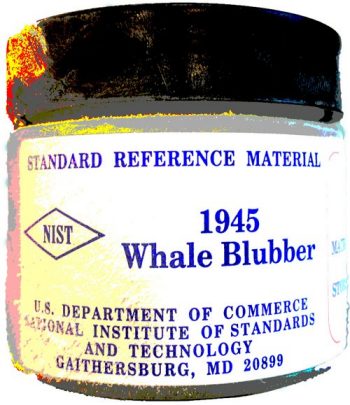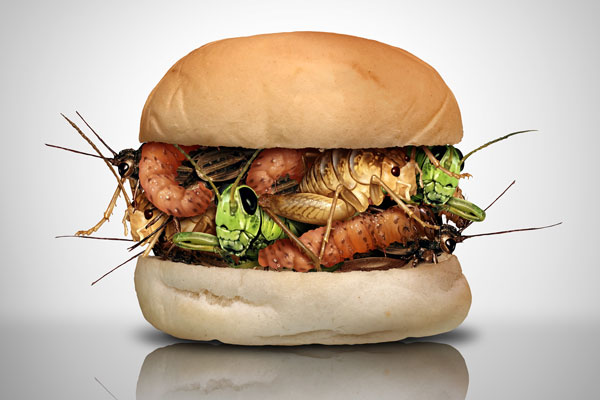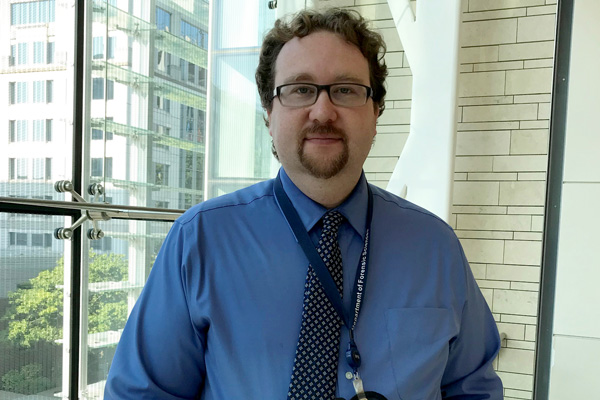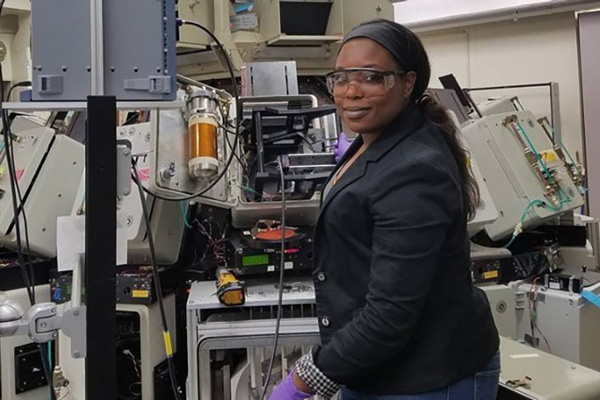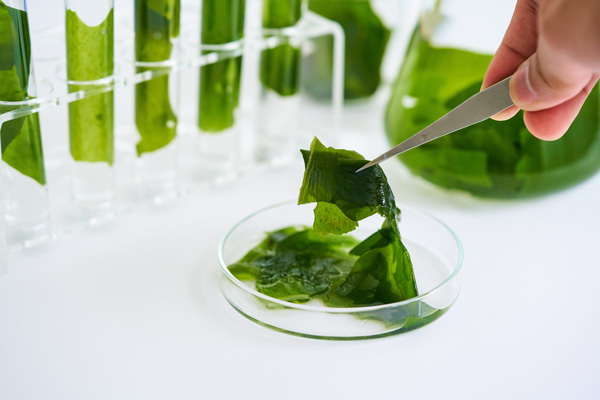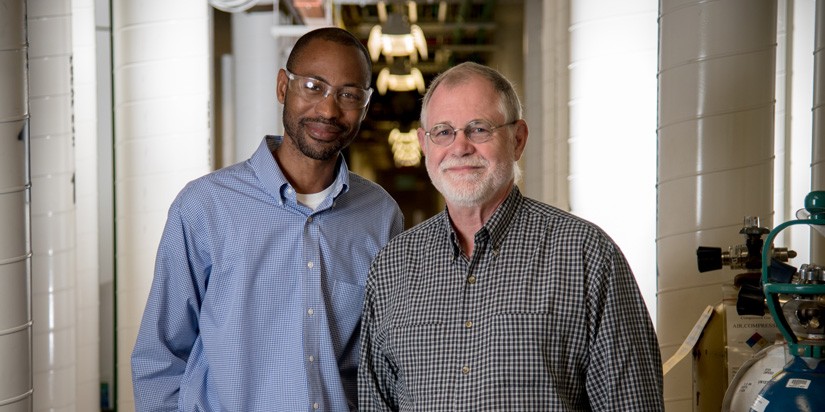
Savelas Rabb
B.S.: Chemistry, Duke University
M.S., Ph.D.: Analytical Chemistry, The Ohio State University
WHAT HE DOES NOW: Chemist, National Institute of Standards and Technology
Robert Vocke
B.S.: Geology, University of Washington
Ph.D.: Geochemistry, Stony Brook University
WHAT HE DOES NOW: Chemist, National Institute of Standards and Technology
Downloads: Download Article (PDF)
Every day, everywhere in the world, people make measurements in some way. Whether a measurement is for a blood test or baking a cake, its quantity has been determined by a known reference. Imagine trying to follow a recipe if you had to guess what an ounce or a tablespoon was.
Enter metrology—the scientific study of measurement—and Robert Vocke and Savelas Rabb, chemists at the U.S. National Institute of Standards and Technology (NIST). Vocke and Rabb work closely together to create standard reference materials. These are solutions or powders that contain known amounts of individual or mixed elements.
Other researchers in the United States and around the world use these materials to calibrate instruments and to verify the accuracy of specific measurements.
The materials are crucial for many applications, such as identifying adulterated olive oil, investigating doping at the Olympics, or ensuring the safety of jet fuel.
This interview was edited for length and clarity.
How did you become interested in chemistry?
Rabb: Early on, maybe when I was in elementary school, an uncle gave me a chemistry set. I don’t know if that necessarily inspired me to go on to chemistry, but it was there in the back of my mind. In high school, I talked to my mom and said that I liked both chemistry and history. And she thought I should go for chemistry.
Vocke: I came out of high school knowing that I wanted to be an aeronautical engineer. I went through three years of engineering school in college, loving it. I took general chemistry. I loved the lab, but I got a C in the course, and I decided I didn’t really like chemistry. Then the bottom fell out of the engineering world. Geology sounded good because it’s very far from chemistry. So, I went into geology, got into grad school, and found myself doing mass spectrometry. I thought that was just about the neatest thing you could possibly do.
What materials are you working on now?
Vocke: NIST has almost 2,000 reference materials that we maintain, and they affect everything from clinical chemistry to nutrition, metabolites to DNA to isotopes to cements. We even have polystyrene beads that were produced on the space shuttle.
Rabb: We work on both trace and major elements in soil, a few nanomaterials, and adult nutritional formulas—a variety of materials.
What do you like most about your job?
Rabb: Maybe four or five years ago, I got my 10-year pin at NIST, and some people wanted to know why I was still here. I told them that I enjoy the work I do, but if it weren’t for the people, I probably wouldn’t be here. This is a very friendly environment, and people are allowed to thrive.
Do you have any advice for high school chemistry students?
Vocke: I think that the prospects in chemistry have never been better, but it’s also getting tougher because you need to master more and more skills. The people who can be both specialists and generalists are the ones that are going to make the breakthroughs. They’re going to see the cross- connections.
Rabb: Being a chemist at NIST would be a fantastic way to go. There are so many opportunities and fields that you can go into, whether it’s in instrumentation or applications. There are just so many things happening here on campus that involve helping the country and the world.
